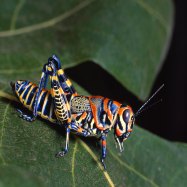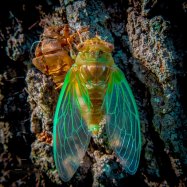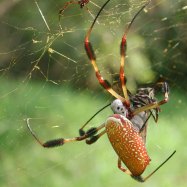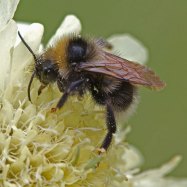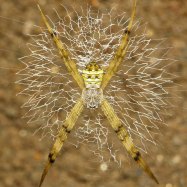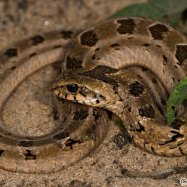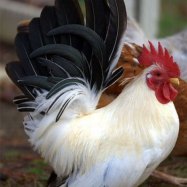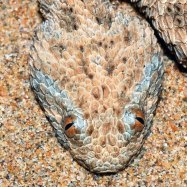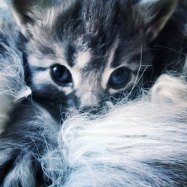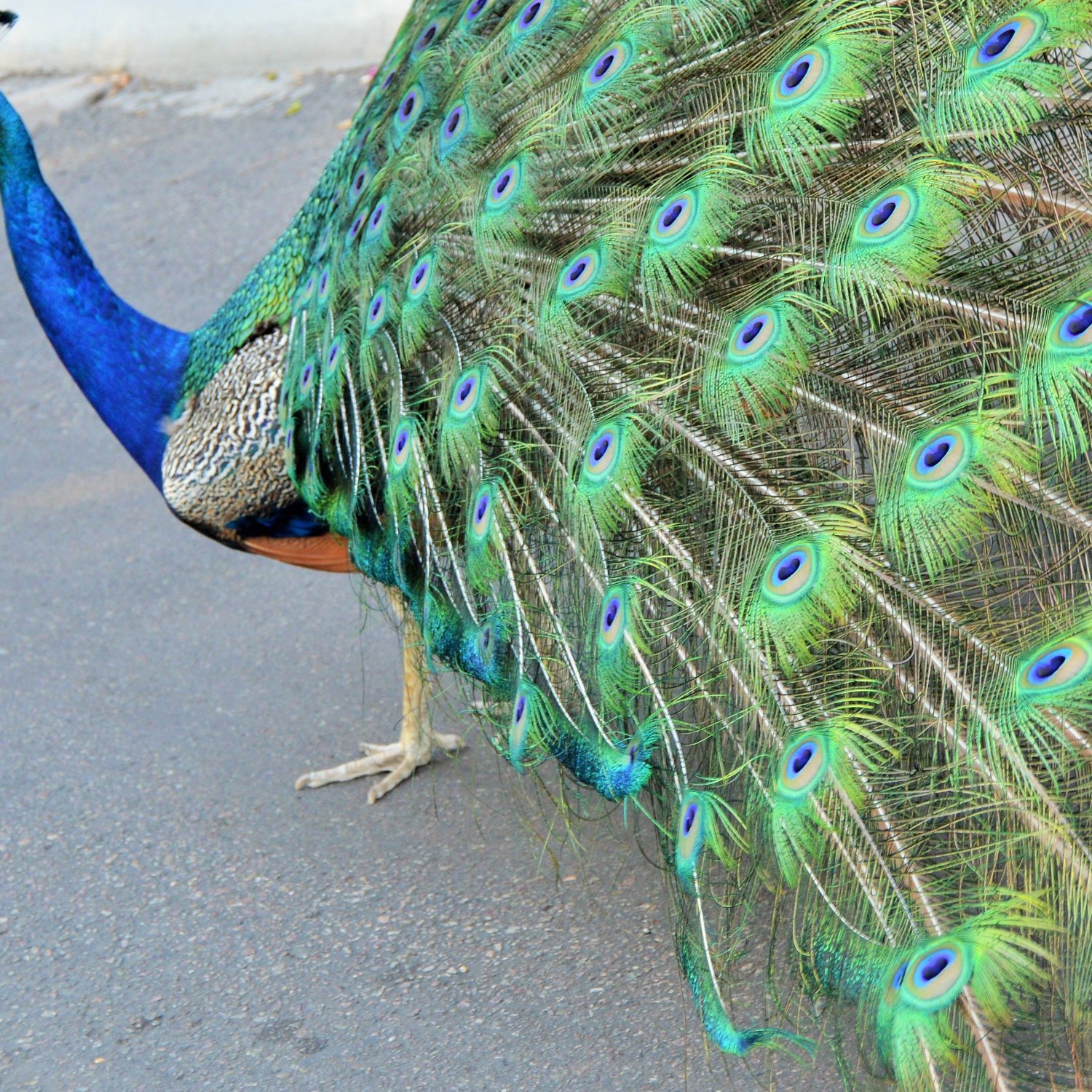
Peacock
Up to 3 meters (including the train)
The peacock, found in South Asia, is a large and majestic bird known for its beautiful train, which can reach up to 3 meters in length. Belonging to the Phasianidae family, this stunning creature sports a long-tailed body and is a sight to behold in its vibrant colors.
Animal Details Summary:
Common Name: Peacock
Kingdom: Animalia
Habitat: Forest, savannah, and grassland
The Majestic Peacock: A Symbol of Beauty, Pride, and Resilience
The peacock, also known as Pavo cristatus in the scientific world, is a creature that has captured the hearts of many with its majestic beauty and grace. It is a popular symbol of beauty, pride, and resilience, and has been revered and admired for centuries. With its colorful and extravagant feathers, unique body shape, and fascinating behavior, the peacock is truly one of the most captivating creatures in the animal kingdom.A Member of the Birds Family
The peacock belongs to the Kingdom Animalia, the same class as all other animals Peacock. It is a member of the Phylum Chordata, a classification that includes all animals with a backbone or spinal cord. The peacock belongs to the class Aves, which is specifically for birds. In terms of order, it falls under Galliformes, a group of birds that include pheasants, turkeys, and quail. The family of the peacock is Phasianidae, which also includes other species of pheasants and partridges.The peacock is a truly remarkable bird, not just because of its bright and beautiful feathers, but also because of its unique characteristics and behavior. Let's take a closer look at some of the fascinating features of this stunning creature.
A Colorful and Dazzling Appearance
One of the most distinctive characteristics of the peacock is its bright and iridescent plumage. Their feathers are a combination of vibrant colors such as blue, green, and gold with hints of purple and bronze. The male peacock is the one adorned with these eye-catching feathers, while the female peahen has a more subdued and brown-feathered appearance Pink Fairy Armadillo.The male peacock uses its feathers to attract a mate during the breeding season. They fan out their feathers in a spectacular display, showcasing their impressive and colorful train, which can reach up to 3 meters in length. The train is made up of elongated upper tail coverts, and it can be erected to form a magnificent back fan. These feathers play a crucial role in courtship rituals, where the male will strut and dance to get the attention of the female.
A Perfect Body Shape and Size
Aside from its vibrant feathers, another striking feature of the peacock is its body shape. These birds have a large and robust body, which can weigh up to 6 kgs. They also have long, slender legs, and their feet have three toes that enable them to perch on trees and roost safely.The peacock's body is designed for flight and running on the ground. Their wingspan can reach up to 5 feet, and their powerful wings allow them to cover long distances while in flight. Their long and powerful legs also help them to run quickly, making them efficient predators and escape artists.
Habitat and Geographical Distribution
The natural habitat of peacocks is sweeping grasslands, forests, and savannahs. They prefer living in tree-covered areas, where they can roost and perch on trees at night. They are adaptable and can thrive in a variety of habitats, but they seem to prefer areas with vegetation and water sources.Peacocks are native to South Asia, specifically India and Sri Lanka. They have been domesticated and introduced to different parts of the world, such as Europe, North America, and Africa. In some parts of India, peacocks are considered sacred and are often found residing near temples and religious sites.
An Omnivorous Diet
Peacocks are omnivorous creatures, meaning they eat both plants and animals. In their natural habitat, their diet consists of insects, small rodents, snakes, amphibians, and plant matter such as leaves, seeds, and berries. They have adapted to eating a wide range of food sources, making them resilient and able to survive in different environments.Peafowls are also known for their ability to swallow poisonous snakes, such as cobras, without being harmed. This is due to a toxin-neutralizing agent present in their blood. This unique adaptation allows them to thrive in areas where these dangerous snakes are common.
A Proud and Resilient Creature
The peacock is not only admired for its beauty but also for its resilience and pride. These creatures are known for their loud and distinctive call, a sound that can travel up to 7 miles. Their call is often used for communication and to mark their territory.Despite their striking appearance, peacocks are also equipped with defense mechanisms to protect themselves in the wild. Their long and sharp claws, in combination with their powerful wings, enable them to defend themselves from predators. Furthermore, their colorful feathers serve as camouflage, making it easier for them to hide from potential threats.
Efforts for Conservation and Protection
The peacock population has seen a decline over the years, mainly due to habitat loss and poaching. In some areas, people hunt them for their feathers, which are often used in traditional medicine and as decorative items. The International Union for Conservation of Nature (IUCN) has listed the peacock as a species of "least concern." However, conservation efforts are needed to ensure their survival in the wild.In India, peacocks are considered a protected species under the Wildlife Protection Act. There are also efforts to protect their habitat and control poaching activities. In Sri Lanka, peafowls are protected under the Fauna and Flora Protection Ordinance. Organizations such as The Green Planet Foundation are also actively working towards the conservation of peafowls in their natural habitats.
In conclusion,
The peacock is undoubtedly a fascinating creature, with its stunning appearance, unique features, and intriguing behavior. It is a symbol of beauty, pride, and resilience, and has captured the hearts of people worldwide. As we continue to learn more about these magnificent birds, it is crucial to also take steps towards their conservation and protection to ensure that future generations can also witness the grace and beauty of peacocks in the wild.

Peacock
Animal Details Peacock - Scientific Name: Pavo cristatus
- Category: Animals P
- Scientific Name: Pavo cristatus
- Common Name: Peacock
- Kingdom: Animalia
- Phylum: Chordata
- Class: Aves
- Order: Galliformes
- Family: Phasianidae
- Habitat: Forest, savannah, and grassland
- Feeding Method: Omnivorous
- Geographical Distribution: South Asia (India, Sri Lanka)
- Country of Origin: India
- Location: South Asia
- Animal Coloration: Brightly colored with iridescent blue and green plumage
- Body Shape: Large and long-tailed
- Length: Up to 3 meters (including the train)
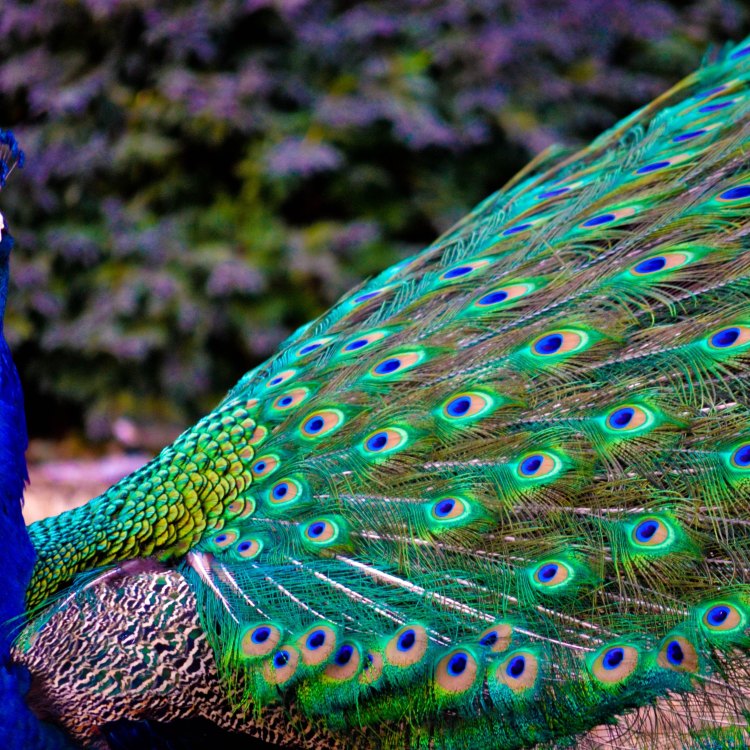
Peacock
- Adult Size: The train of a male peacock can be up to 5 feet long
- Average Lifespan: 15-20 years
- Reproduction: Sexual
- Reproductive Behavior: Mating displays by male to attract female
- Sound or Call: Loud and distinctive call (peacock's scream)
- Migration Pattern: Non-migratory
- Social Groups: Small flock or harem with one dominant male
- Behavior: Displaying and courtship rituals during mating season
- Threats: Habitat loss and poaching
- Conservation Status: Least Concern
- Impact on Ecosystem: Seed dispersal and insect control
- Human Use: Ornamental purposes, cultural symbol, and tourism
- Distinctive Features: Iridescent plumage and elongated train feathers
- Interesting Facts: - The male peacock is known for its impressive and colorful train, which is used in courtship displays. - The peacock's train is not its tail, but rather elongated upper tail coverts. - Peafowl refers to both male (peacock) and female (peahen) of the species. - Peafowl can fly despite the length of their train feathers. - The peacock is the national bird of India.
- Predator: Large cats, wild dogs, and humans
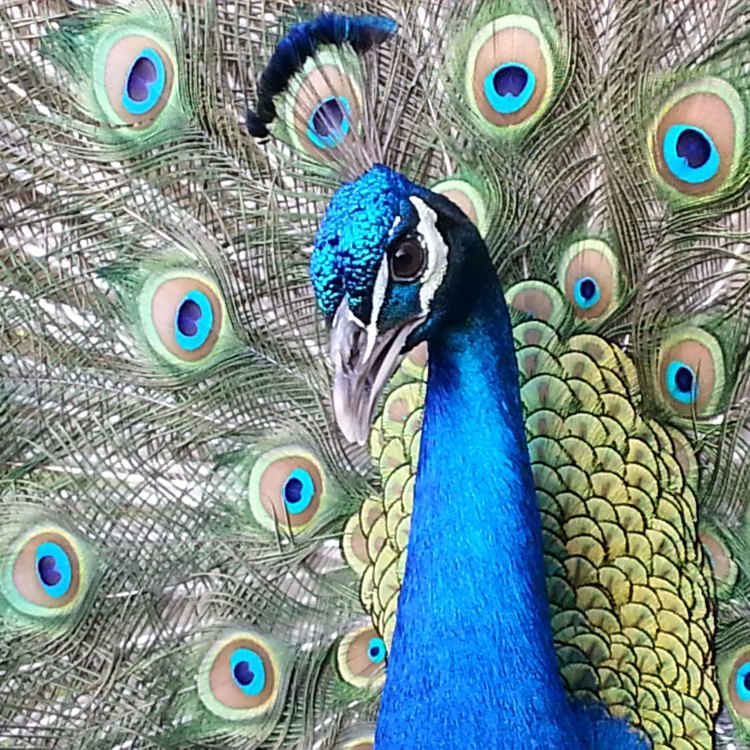
Pavo cristatus
The Magnificent Peacock: A Majestic Species
The peacock, also known as the Indian peafowl (scientific name: Pavo cristatus), is a magnificent and awe-inspiring species of bird. With their striking colors and elaborate mating displays, peacocks have captured the fascination and admiration of humans for centuries. Native to countries such as India, Sri Lanka, and Myanmar, these birds are now spread worldwide due to human intervention and popularity.In this article, we will delve into the unique and fascinating features of the peacock, its impact on the ecosystem, and its relationship with humans PeaceOfAnimals.Com. Let's take a closer look at this majestic creature that is often referred to as the "king of birds."
Adult Size and Average Lifespan
The first thing that comes to mind when talking about peacocks is their extravagant train. The train, which is made up of elongated upper tail coverts, can reach up to 5 feet in length in male peacocks. This is almost the same height as an average human!On the other hand, female peacocks, also known as peahens, are smaller in size and lack the luxurious train feathers. Their average length can reach up to 3 feet.
Peacocks have an average lifespan of 15 to 20 years. However, in captivity, they can live up to 25 years, thanks to proper care and protection provided by their human keepers.
Reproduction and Reproductive Behavior
Peacocks are a sexually reproductive species, meaning they require a male and female for reproduction. During the breeding season, which is from late March to October in their native regions, male peacocks showcase their elaborate courtship displays to attract a female partner Portuguese Podengo.These displays involve the male fanning out his train feathers and performing a dance-like strut, accompanied by loud and distinctive calls. This ritual is a way for male peacocks to show off their strength, health, and genetic fitness to potential mates. The more elaborate and impressive the display, the higher the chances of attracting a female.
Sound or Call
The peacock's loud and distinctive call, often described as a "scream," is something that cannot go unnoticed. This call is used by male peacocks during their courtship displays, and it can be heard from up to a mile away.Interestingly, the peahen does not produce a loud call like the peacock and is often silent throughout the courtship rituals. This showcases the male peacock's dominance and ability to attract and impress a mate solely with his display and call.
Migration Pattern and Social Groups
Unlike many bird species, peacocks do not have a specific migration pattern. They are non-migratory, meaning they stay within their native territory all year round. This is due to the abundance of food and resources available in their habitat, making it unnecessary for them to migrate.Peacocks are social birds, and they form small flocks during non-breeding season. However, during the breeding season, male peacocks will form a small harem, consisting of 2-5 females, with one dominant male guarding them.
Behavior and Threats
Aside from their elaborate courtship displays, peacocks have a calm and gentle demeanor. They are diurnal and spend most of their day foraging for food and basking in the sun.However, peacocks are facing increasing threats in the wild, mainly due to habitat loss and poaching. Deforestation and human development have greatly reduced their natural habitat, and they are now becoming dependent on human-provided food and shelter. Poaching for their luxurious feathers, which are used in fashion and home decor, is also a significant threat to their survival.
Conservation Status and Impact on Ecosystem
Despite the threats they face, peacocks are surprisingly considered a species of least concern on the IUCN Red List. This is mainly due to their adaptability to different environments, and the fact that their population is stable in captivity.Peacocks play an important role in their ecosystem, mainly through seed dispersal and insect control. As omnivores, they feed on a variety of plants and insects, distributing seeds and controlling insect populations, ultimately contributing to a balanced and healthy ecosystem.
Human Use and Distinctive Features
Peacocks hold significant cultural importance in many countries, especially in India, where they are considered the national bird. In Hinduism, the peacock is seen as a symbol of beauty, grace, and royalty, often depicted alongside deities in religious art.Due to their stunning and iridescent plumage, peacocks are also highly sought after for ornamental purposes. They are kept in zoos, parks, and private collections, and their feathers are used for fashion and decorative purposes. The tourism industry also benefits from the presence of these birds, with many travelers visiting regions where peacocks are abundant.
The most distinctive feature of the peacock is, of course, its elaborate train feathers. These feathers are not for flying, but rather used solely for courtship displays. The male peacock's train is not its tail, but rather upper tail coverts, which are positioned above the tail feathers.
Interesting Facts
Aside from their striking features and behaviors, there are many interesting facts about peacocks that make them a truly unique species, including:- Peafowl refers to both male (peacock) and female (peahen) of the species.
- Despite the length of their train feathers, peacocks can fly, but they rarely do so.
- The peacock's train feathers can change color depending on the angle of light, giving the illusion of different shades.
- Peacocks were brought to countries such as Europe and the United States by traders and explorers, and they started breeding in captivity, leading to their spread around the world.
Predators
Despite their grand appearance and impressive display, peacocks still have natural predators in the wild. Large cats such as tigers and leopards, wild dogs, and humans are the primary predators of peafowls. But due to their large size and sharp talons, peacocks can also defend themselves against smaller predators.In conclusion, the peacock is a truly remarkable species that continues to capture the hearts and minds of humans worldwide. With their elaborate displays, stunning feathers, and cultural significance, they hold a special place in many cultures and play an essential role in their ecosystem. As their population continues to face threats, it is our responsibility to protect and conserve these magnificent creatures for generations to come.
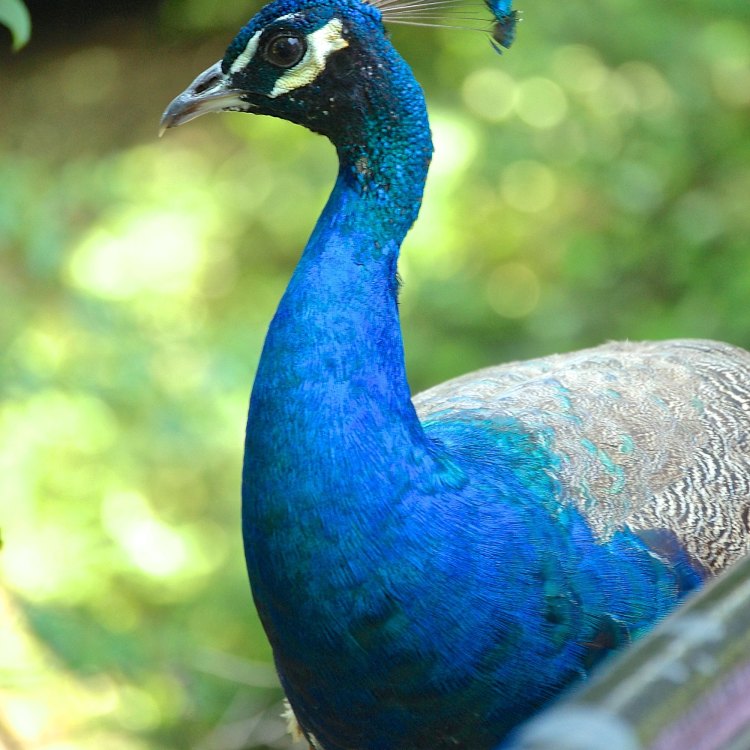
The Majestic Peacock: A Symbol of Beauty, Pride, and Resilience
Disclaimer: The content provided is for informational purposes only. We cannot guarantee the accuracy of the information on this page 100%. All information provided here may change without prior notice.


